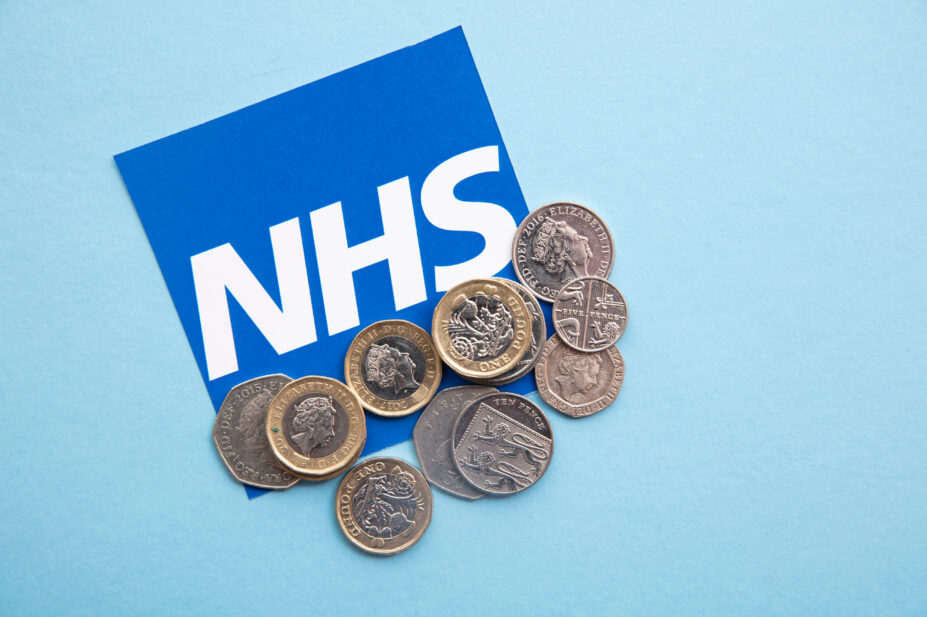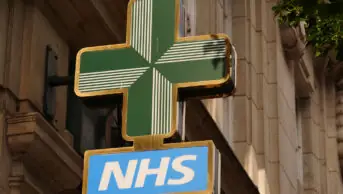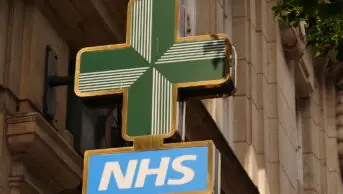
Shutterstock.com
The NHS currently pays relatively low prices for medicines, with thousands of individual pharmacy purchasers driving down the cost of generics and the National Institute for Health and Care Excellence (NICE) keeping costs for new medicines low.
NICE thresholds currently consider a spend of £20,000–£30,000 per additional quality adjusted life year (QALY) gained to represent good value for money for the NHS. However, these thresholds haven’t changed or been adjusted for inflation for more than 20 years and aren’t due to be reconsidered until 2028.
NICE describes a QALY as: “A measure of the state of health of a person or group in which the benefits, in terms of length of life, are adjusted to reflect the quality of life. One QALY is equal to one year of life in perfect health.”
The Association of the British Pharmaceutical Industry (ABPI) says this threshold needs to double, warning that the low threshold could have an impact on the medicines that are available to patients in the UK, as some pharmaceutical companies cannot offer their products to the NHS at those prices.
So far, the government has pushed back on industry demands for higher payments for its medicines, arguing the best interests of the NHS and its taxpayers, and suggesting that pharmaceutical companies should accommodate lower prices.
However, press reports have suggested that NICE is reconsidering as the US government threatens the pharmaceutical industry with higher tariffs – which officials say could be kept at bay if the NICE threshold is increased by 25%.
Are patients missing out?
According to NICE’s own technology appraisal data, the proportion of technology appraisals — NICE’s assessment of whether drugs should be recommended for NHS use — terminated by manufacturing companies has increased in recent years.
Pharmaceutical companies say this means UK patients are missing out on potentially life-saving medicines. According to discussions between NICE, the ABPI and the ten manufacturers that had the highest number of terminated appraisals in recent years, more than half (55%) of the medicines that were withdrawn from consideration for NHS-funding were available across Germany, France, Italy and Spain.
The reasons for companies withdrawing their product from the appraisal process is not made public. However, a survey of manufacturers carried out by the ABPI in 2021 found that of 29 responses, 7 companies said they were unable to present a cost-effective case owing to pricing of other medicines in the combination, and 10 companies said there was a lack of flexibility in the process to pursue differential net pricing or complex schemes.
The ABPI told The Pharmaceutical Journal that some of these factors were less likely to be in play if the cost-effectiveness threshold was higher — for instance, indication-based pricing or commercial flexibilities would be needed less frequently.
In a paper presented at NICE’s September 2025 board meeting, discussions with the ten companies who had the most terminated applications found:
- A total of 70% of terminated indications discussed were withdrawn because the company considered the product/indication would likely not be found clinically and cost effective by NICE;
- In 30% of terminated indications discussed, companies said they would struggle to get a commercial return in smaller indications after the costs of an appraisal had been factored in;
- Within the ten companies reviewed, 20% of terminations related to new medicines (new active substances), while almost 80% related to licence extensions.
In its public appraisals database, NICE rarely records the specific reason for company termination, generally stating: “At the time of appraisal, the technology was not considered to be an appropriate use of NHS resources based on the data available.”
Meeting the cost effectiveness cut off point
Sometimes, terminated appraisals are followed by a discount arrangement, such as a patient access scheme, where the manufacturer agrees to provide the drug to the NHS for a cheaper price. In 2010/2011, omalizumab for the treatment of severe persistent allergic asthma in children aged 6–11 years was terminated because the committee concluded: “Such incremental cost-effectiveness ratios (ICERs) were substantially higher than those normally considered to be an acceptable use of NHS resources and concluded that omalizumab for the treatment of severe persistent allergic asthma in children aged 6–11 years could not be recommended as a cost-effective use of NHS resources.” Then in 2013, omalizumab was approved as an option “only if the manufacturer makes omalizumab available with the discount agreed in the patient access scheme”.
For certain medicines, manufacturers cannot give the discounts required. In the case of cancer drug tislelizumab (Tevimbra; BeOne Medicines), which was proposed as an alternative to nivolumab but then withdrawn in 2025/2026, NICE noted: “Company withdrew its submission prior to the committee meeting as it could not offer the discount required.”
In some cases, a drug that is not considered to be cost effective within the scope of its marketing authorisation may be approved for use in a smaller patient cohort or within specific circumstances or settings — a decision that NICE calls “optimised appraisals”. Most recently, guselkumab (Tremfya) received an “optimised” outcome, making it available on the NHS as a possible treatment for previously-treated moderately to severely active Crohn’s disease in adults, only when a conventional or biological treatment has not worked well enough, or cannot be tolerated, and a tumour necrosis factor (TNF)-alpha inhibitor has not worked well enough, cannot be tolerated or is unsuitable.
Concerns have been raised that optimised recommendations are increasingly limiting the number of patients that are able to access these medicines, despite this being categorised as a “positive” recommendation by NICE. A decision to optimise can be made either by the company submitting the appraisal or by NICE.
A report from the Office of Health Economics (OHE), published in May 2025, found that in 2022–2024, on average optimised recommendations provided access to 31% of patients eligible for treatment as outlined in the drug’s marketing authorisation. This compares with figures of 45% in 2020–2022 and 39% in 2015–2019.
There was a spike in the termination rate in 2019/2020 at 19% — from an average 10% termination rate between 2008/2009 to 2018/2019 — followed a policy change that required all novel active substances and significant indications to be assessed by NICE, resulting in an increased number of assessments overall.
The rate of terminations has since stabilised, and “reflect that not all products/indications will likely be clinically and cost effective”, according to NICE’s September 2025 board meeting paper.
NICE added that it would continue to monitor terminations “with a view to best continuing to support access to clinically and cost-effective medicines for patients in England”.
Some health economists say the NICE threshold is already “too high” and that spending more on new, expensive treatments takes away funding from proven, more cost-effective interventions.
Rumoured threshold increase
Responding to reports in POLITICO on 8 October 2025 that suggest the UK is preparing to increase the NICE threshold by 25%, Sally Gainsbury, senior policy analyst at the Nuffield Trust, said in a statement: “With the health service already under immense financial pressure, giving in to demands from pharmaceutical companies to spend more on drugs would mean less money available for other services and treatments.”
However, NHS medicines spending may not be able to avoid a changing globalised landscape for much longer. Private patients have already seen the impact of US tariffs, such as when the price of Mounjaro was hiked in August 2025 to match prices available in the United States and the rest of the world. Also, pharmaceutical companies have threatened and even begun to pause or withdraw investment in the UK.
The government’s position is rumoured to be changing. Science minister Patrick Vallance recently told the BBC that the price the NHS pays for medicines will need to rise to stop the exodus of global pharmaceutical companies. On the other hand, Mark Sculpher, head of department at the Centre for Health Economics, University of York, said: “The factors that attract investment to life sciences are things like taxation, grants and a skilled workforce. There is no reason why the prices the NHS pays for new products should influence this investment.”
Unless the government pays more or industry accepts less, patients could be left without NHS access to the newest, most innovative medicines — which are often also the most expensive. An increase to NICE thresholds may be enough to keep these medicines available through the NHS for now.


